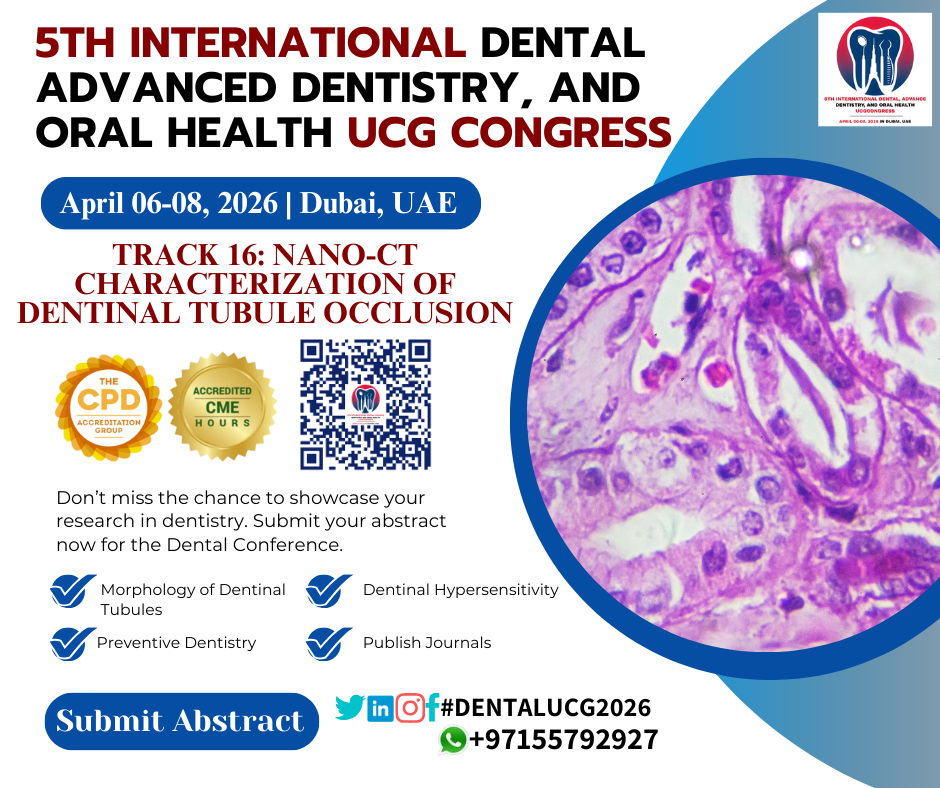Sub-tracks:
Imaging Techniques, Nano-CT Imaging Resolution, Dentinal Tubule Analysis, Occlusion Methods, Material Interactions, Image Processing and Analysis, Structural Integrity, Data Interpretation, Comparison with Other Imaging Modalities, Clinical Implications, Technological Advancements, Error Analysis, 3D Reconstruction, Histological Correlation, Application in Restorative Dentistry
What is Nano-CT characterization of dentinal tubule Occlusion?
Nano-CT characterization of dentinal tubule occlusion involves using high-resolution nano-computed tomography (CT) to analyze and visualize the occlusion of dentinal tubules in teeth. This technique provides detailed 3D imaging of the dentin structure, allowing for precise assessment of how various materials or treatments block or seal the tubules. By examining the effectiveness of dentinal tubule occlusion, clinicians can evaluate the success of different restorative or desensitizing treatments. This characterization helps in understanding the interaction between materials and tooth structures at the microscopic level, improving treatment strategies and outcomes in dental care.
Application in Restorative Dentistry:
In restorative dentistry, applications include assessing and improving treatments like fillings, crowns, and root canal procedures. Techniques such as Nano-CT enable precise visualization of dentinal tubule occlusion, aiding in evaluating the effectiveness of restorative materials and methods. This detailed imaging helps in optimizing the fit and functionality of restorations, ensuring they adequately seal and protect the tooth structure. Additionally, it assists in diagnosing and planning complex restorations by providing insights into material interactions and structural integrity. These advancements enhance the overall success and durability of restorative treatments, contributing to better patient outcomes and long-term oral health.
Image Processing and Analysis:
Image processing and analysis involve techniques to enhance, interpret, and extract meaningful information from digital images. This includes filtering to improve image quality, segmentation to identify specific regions of interest, and quantification to measure and analyze features. In fields like dentistry, these processes help in assessing the quality of restorations, detecting anomalies, and planning treatments. Advanced algorithms and software enable precise visualization and evaluation of complex structures, such as dentinal tubules, contributing to better diagnostic accuracy and treatment planning. Effective image processing and analysis are crucial for translating raw data into actionable insights for improved clinical outcomes.





